VISIT US
Here you will find anything you need to know for your visit
Opening Times
Open on Wednesdays and Thursdays from 11:00 a.m. to 4:00 p.m. and on Fridays, Saturdays and Sundays from 11:00 a.m. to 7:00 p.m. Last admission: 30 minutes before closing. Clearance from the rooms: 15 min before closing.
11:00 to 16:00
wednesday and thursday
11:00 to 19:00
friday, saturday and sunday
CLOSED
monday and tuesday
Fares
Free general admission includes museum access to both the permanent collections and temporary exhibitions. It is recommended to reserve tickets to visit the historical archive of Plentzia.
Access for children, adults and retirees is free, and you can obtain entry here or by requesting it at the museum reception.
The location of the museum
The Plasentia de Butrón Museum, founded in 1998, is located in the historic center of Plentzia, of medieval origin, located in the old town hall. The building that houses the museum was the former town hall.
Guided Visit
Do you want to see the museum and historical archive of Plentzia through the eyes of our guides?
To book guided tours of the museum, contact us by email, telephone or social networks.
Phones: 94 677 37 25 / 628 557 393
Email: contacto@museoplentzia.org
Activities scheduled for education
At the Plentzia Museum we are pleased to be able to offer educational centers the opportunity to experience the history of Plentzia through recreational activities for students and specialized content to support teachers.
PLENTZIA AND ITS HISTORY
Plentzia, originally Plasencia or Plasencia de Butrón, was founded by Don Lope de Haro on the old town of Gaminiz in the year 1236 and was granted the Charter of Logroño in the year 1299, by Don Diego Lope de Haro. Since the 13th century it has been mentioned in treaties, routes and maps. It is curious to observe the different names that their authors, most of them French and Dutch, attribute into them.
A seafaring and fishing village in its origins, in the document of its founding it was already recognized as an area for whale fishing. Its sailors subsequently dedicated to cabotage and the transport of iron ore in the Bay of Bizkaia, with their number of boat registration becoming the largest in the sea fleet and in deep-sea navigation.
Since the 19th century, due to the Convention Wars with England, and the Carlist Wars, in which the Fleet registered in Plentzia practically disappeared, Plentzia sailors, enrolled in ships from other ports, were present especially in trade with Andalusia, England, Caribbean and Philippines.
All aspects of navigation were governed by the Brotherhood of Seafarers (Cofradía) of Plentzia, called San Pedro, which also brought together the sailors of Barrika, Sopela, Lemoiz and Gorliz. Its oldest ordinances date back to 1524. The Brotherhood became extinct in 1870.
The Cofradía promoted the Plentzia Nautical School, which operated from time immemorial and existed until 1933. Also in the 20th century, the Customs House, the Regional Court and the Navy Assistant disappeared.
Due to the excellent quality and quantity of the wood in its forests, the existence of shipyards has been known since the beginning of the town, in the place where the so-called square is currently located, as it appears in the Delmas engraving from the middle of the 19th century. The shipyards disappeared after the Second Carlist War, in the last third of the same century.
The estuary has been decisive in marine development, the poet Ramón de Basterra wrote about it and the museum shows a model layout. The draft problems aggravated by the construction of the outer docks at the beginning of the 20th century, the channeling of the estuary and the road to the Marine Sanatorium, have diminished and varied the old topographic profile.
Support
Let the story of Plentzia continue its course. There are many ways to support, both big and small. Therefore, we invite you to join us in our mission to foster a lasting connection with the heritage of the Cantabrian Coast.
THE PLASENTIA DE BUTRON MUSEUM
The Plasentia de Butrón Museum, founded in 1998, is located in the historic center of Plentzia, of medieval origin. It is located in the old town hall, a 16th century building, with a typology of a tower house. It is a cubic stoned building with a hipped roof, of which two of the facades are visible.
The main façade has two floors: on the ground floor there is a window and an entrance set back on one side, with a semicircular arch.
After the construction of the current Town Hall, in 1922, this tower house served as a regional and local court.
On the façade it has two shields; that of the Villa and that of the Catholic Monarchs.
Above the entrance, an inscription from 1562 alluding to the donor, Don Martín Pérez de Placencia, which reads as follows:
«THIS HOUSE WAS COMMANDED BY DOCTOR MARTIN PEREZ OF PLAZENZYA I TO MAKE IT HE LEFT OF PERPETUAL INCOME FIFTY AND THREE THOUSAND AND THREE HUNDRED AND NINETY SIX MARAVEDYS TO CAST THEM IN WHEAT ON THE VILLAS OF UZEDA AND MECO LABRADA MAY 27, 1562 YEAR»

